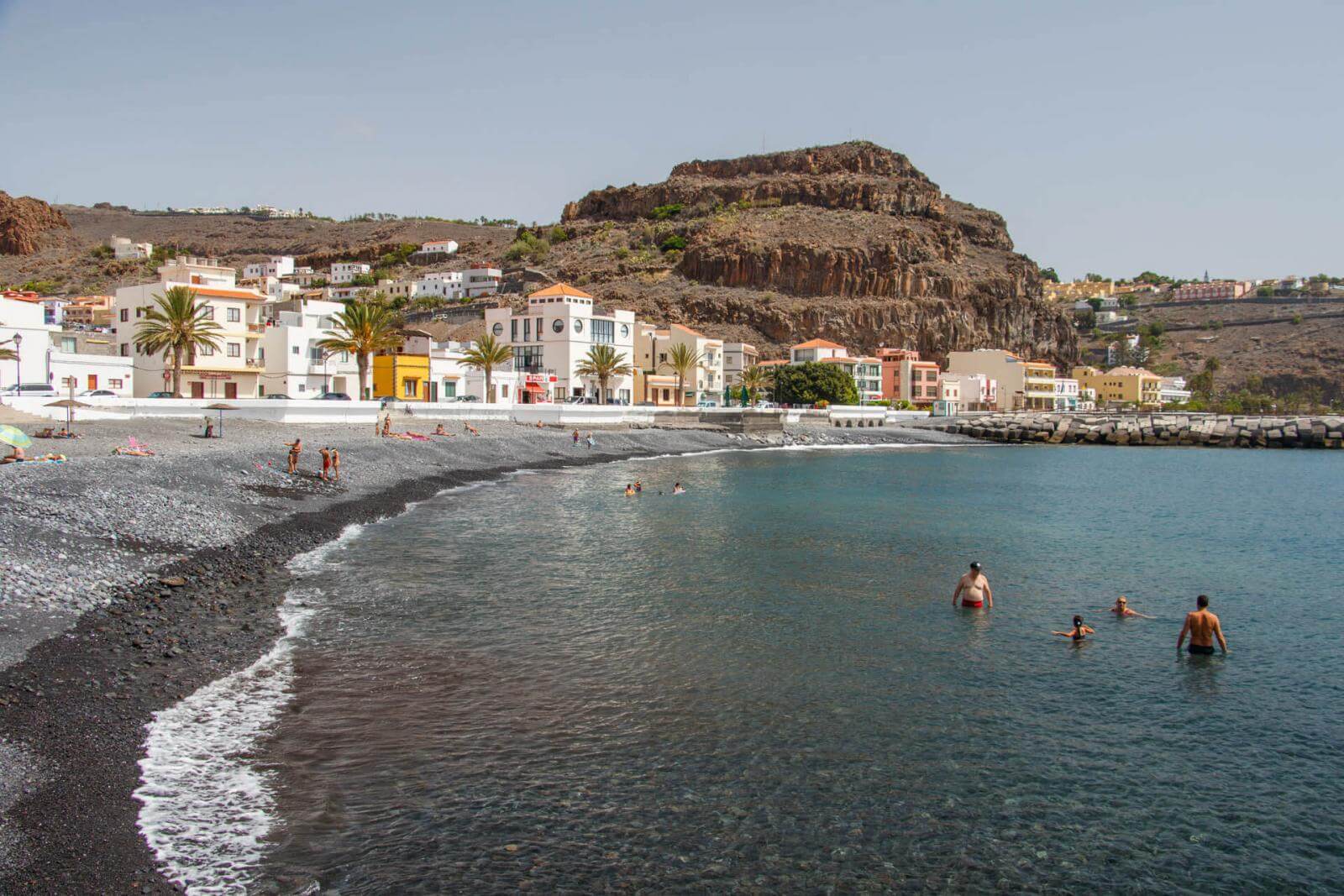In the south of the island of La Gomera, Alajeró is famous for its cliffs and ravines, its volcanic landscapes and the network of trails that connect it, from the hamlets to Santiago Beach. A jewel waiting to be discovered, where nature, fauna and beaches combine around scenery from historic periods and classical architecture. Somewhere to just wander without direction and to enjoy all the opportunities that La Gomera has to offer.
The southern trail
Alajeró is the flattest of all of the island areas, full of fields of cereals and livestock and famous for the remote trails that are all connected. Alajeró is known as ‘the southern trail’ because of how varied, well maintained and well designed the routes are, and it is worthy of the nickname. The trails can take us to all of the hamlets, to the characteristic cliffs and ravines or past the classical architecture typical of Alajeró.
The best example is the 18th-century Church of El Salvador, featuring a figure of crucified Christ, made a century before the rest of the building and one of the oldest sculptures on the island. The Shrine of Nuestra Señora del Buen Paso or the Church of San Salvador are other examples of classical architecture. Stone houses, which are in complete harmony with nature, are very typical in the area. The Shrine of San Isidro and the Dragon Tree of Agalán are on El Calvario Mountain, also known as Tagaragunche, somewhere very special for inhabitants of La Gomera as an ancient sacred site.
Its cliffs, declared a Site of Scientific Interest, are the great pride of Alajeró, not just on account of their visual beauty but due to their biological value. They are inhabited by endangered, protected and endemic species, such as the osprey, and are an exceptional nesting area for them. They are difficult to reach by land and, although they are a spectacular sight in any case, their beauty is best appreciated from the sea.

Souvenirs from the volcanic era
The natural monument of La Caldera is also an historic example of the island’s nature and one of the prettiest landscapes in Alajeró. It is a volcanic cone, the largest and best conserved formation on La Gomera and a modern-day testimony to the island’s volcanic nature, although there have been no eruptions in the past million years. It is currently covered with ‘tabaibal’, a mixed plant formation that is typical in the archipelago. La Caldera is an important scientific asset in its entirety, a real museum piece out in the open air.
Another must-visit destination is the protected landscape of Orone, an area that encompasses two large ravines: Erques-La Rajita and La Negra. It is one of the best examples of the variety of nature systems and habitats that La Gomera is home to in such a small space. In the middle area, which can be visited on foot, there are hamlets that have now been abandoned but still retain their beauty and very unusual history.
Santiago Beach
Of all of the beaches in Alajeró, the best known is Santiago Beach, in the town of the same name. It is almost half a kilometre long and is one of the most visited on the island. Its clear, clean water and its proximity to the urban area create the perfect combination for a quick visit. It is also the ideal place to go scuba diving because its seabed is so varied. It is surrounded by restaurants and shops and it is very close to the Santiago Beach fishing port.
Santiago Beach has become one of the places most frequently visited by tourists on La Gomera. A delightful little coastal village full of shops and with a busy main square. It is the perfect place to scuba diving and all kinds of water sports, such as sailing, kayaking or snorkelling. There are several active tourism companies through which you can enjoy some hiking, golf, mountain biking and hire boats or mopeds.
You can find hidden treasures in this area such as the coves at Erese, La Cantera and La Negra. Erese is a rocky cove hidden at the bottom of a ravine and between cliffs and it can only be reached by boat. La Cantera, next to it, can be reached on foot or by sea and is famous for its peace and quiet – somewhere calm to enjoy on your own. La Negra Beach is much easier to get to: an almost virgin cove removed from the urban area, where there is some great scuba diving to be had due to the wide variety of marine species here.
Alajeró is where La Gomera Airport is, one of the main points of entry for the island, along with the Port of San Sebastián. It is the most modern airport in the whole archipelago. Completed and opened in 1999, it receives almost 50,000 passengers a year from the other islands.
















